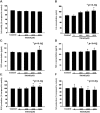Trimethylamine N-Oxide, Circulating Endothelial Progenitor Cells, and Endothelial Function in Patients with Stable Angina
- PMID: 30862856
- PMCID: PMC6414518
- DOI: 10.1038/s41598-019-40638-y
Trimethylamine N-Oxide, Circulating Endothelial Progenitor Cells, and Endothelial Function in Patients with Stable Angina
Abstract
Trimethylamine N-oxide (TMAO) is a metabolite originated from bacterial metabolism of choline-rich foods. Evidence suggests an association between TMAO and atherosclerosis, but the relationship between TMAO and endothelial progenitor cells (EPCs) remains unclear. This study aimed to identify the relationship between TMAO concentrations, circulating EPCs, and endothelial function in patients with stable angina. Eighty-one stable angina subjects who underwent coronary angiography were enrolled. The circulating EPCs and flow-mediated vasodilation (FMD) were measured to evaluate endothelial function. Plasma TMAO and inflammatory markers, such as hsCRP and IL-1β, were determined. Furthermore, the effect of TMAO on EPCs was assessed in vitro. Patients with lower FMD had significantly decreased circulating EPCs, elevated TMAO, hsCRP, and IL-1β concentrations. Plasma TMAO levels were negatively correlated with circulating EPC numbers and the FMD, and positively correlated with hsCRP, IL-1β concentrations. In in vitro studies, incubation of TMAO in cultured EPCs promoted cellular inflammation, elevated oxidative stress, and suppressed EPC functions. Enhanced plasma TMAO levels were associated with reduced circulating EPCs numbers, endothelial dysfunction, and more adverse cardiovascular events. These findings provided evidence of TMAO's toxicity on EPCs, and delivered new insight into the mechanism of TMAO-mediated atherosclerosis, which could be derived from TMAO-downregulated EPC functions.
Conflict of interest statement
The authors declare no competing interests.
Figures




References
Publication types
MeSH terms
Substances
LinkOut - more resources
Full Text Sources

